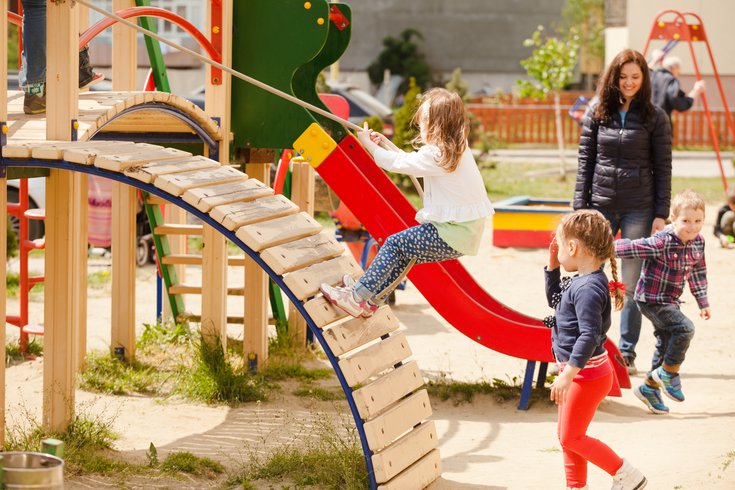
May 18, 2022
 Source/Image licensed from Ingram Image
Source/Image licensed from Ingram Image
National guidance for child care programs calls for at least two opportunities each day for physical activity. They should total 60-90 minutes. But a new study finds most programs don't meet these guidelines.
Childhood obesity is among the most concerning health issues in the United States, with the condition affecting about 1 in 5 kids.
A lack of exercise at child care programs might be contributing to the problem. Among children ages 2-5, the obesity rate is 12.7% according to the most recent statistics from the U.S. Centers for Disease Control and Prevention.
The American Academy of Pediatrics recommends infants get 30 minutes of physical activity each day. Toddlers and preschoolers should be active for at least three hours. Regular physical activity is essential for the healthy management of weight and a child's physical, psychological and social development.
While parents play an essential role in the amount of exercise their young children get, many young children spend a significant amount of time at child care programs. Because of this, parents are dependent on the programs to ensure their kids are moving enough each day.
National guidance for child care programs calls for at least two opportunities each day for physical activity. They should total 60-90 minutes.
Study upon study, however, suggests that in many cases, children in child care programs are not getting the recommended amount of physical activity. This has parents, educators and health care providers concerned about the impact a lack of activity will have on the kids' cardiovascular, musculoskeletal and mental health.
A study published Wednesday in Pediatrics found 74% of child care programs provide two daily opportunities for physical play, but only half meet the total time recommendation. And only about 43% meet both recommendations.
"Kids who are less active have poorer physical fitness and coordination, higher rates of obesity, shorter attention spans, and poorer cognitive development," study author Lauren Olsho, of Abt Associates in Rockville, Maryland, told U.S. News & World Report. "Fully 60% of kids in the U.S. are in some kind of formal child care for an average of around 30 hours a week, which means that child care settings are the main opportunity for many kids to be active."
The study involved 227 classrooms from 96 child care centers and 131 Head Start programs. Through observations, the researchers calculated that the children were inactive about 25% of the time. And that didn't include naps, snack breaks or meals.
They also found that teacher-led physical activity was really important. The children in child care programs that had teachers engaging in outdoor play logged about 30 minutes more active time each day.
Olsho recommended multiple, short outdoor play sessions instead of one long session, because young children tend to be more active at the beginning.
The message out of this study is not new. Scientists have been raising the alarm over the lack of physical activity in child care programs for years. Research consistently has shown that children aren't getting enough physical activities in these programs.
In a 2015 study, preschoolers at 10 child care centers in the Seattle region spent about 30 minutes playing outside. and were offered less than an hour each day for indoor play. They had less than 10 minutes per day of teacher-led physical activity.
Overall, the children only spent about 48 minutes each day in active play. The researchers calculated that the children were sedentary for 73% of the day.
In 2019 article published by The Conversation, two professors at the Child Health and Physical Activity Lab in Canada wrote that children were still not getting enough physical activity in child care programs, emphasizing the unfair burden on education specialists to meet children's physical activity needs.
Many educators lack the confidence to develop opportunities to engage young children in physical activity, they wrote, citing the need for more professional development and training. Educators also can be hampered by a lack of appropriate equipment and resources, including balls, hoops and dedicated indoor and outdoor spaces for physical play.
Experts stress that parents concerned that their young children aren't physically active enough at day care can address any shortfalls at home by engaging in physical play with their children and setting limits on screen time.